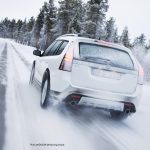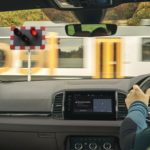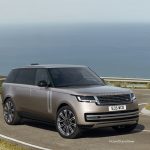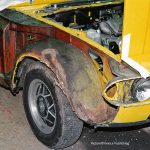The first thing to remember about driving in snow is that cars can do things on super-slippery surfaces that we aren’t used to in the UK. First and probably most importantly, your car will be covered in the white stuff. It’s important to clear all the windows so you have all-round visibility, as unpleasant as this might be.
If you can, clear snow from the bonnet and roof too. You don’t want it flying off and blinding a following driver, or sliding forwards and blinding you when you brake.
Do you know which wheels drive your car?
This is important because it will have an impact on how you go about driving in snow. Models whose front wheels receive the power from the engine or electric motor tend to be better in snow because there is more weight over the driving wheels. Most cars are front-wheel drive. And most cars won’t be driving on winter tyres which give you more grip.
It’s also important to know which wheels drive your car because those are the ones you’ll have to mount snow chains or snow socks on if you have them.
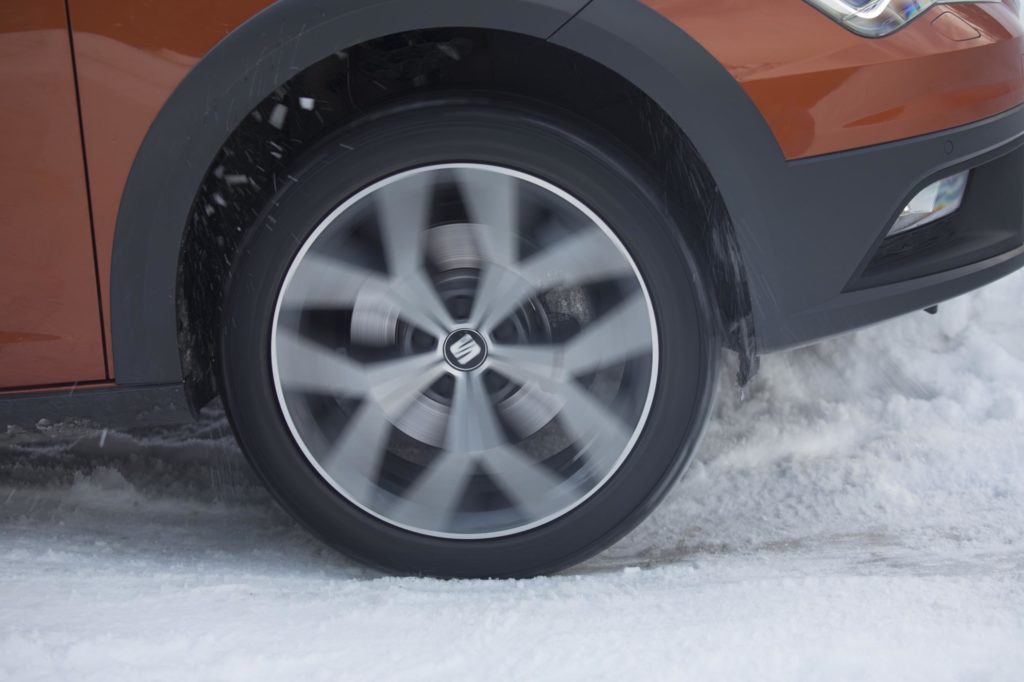
Do you know how to get going when driving in snow?
Driving in snow – and on it – is different to a slippery, wet road. Assuming you don’t have winter tyres, you will probably find you have no grip at all.
A heavy lump of metal with four contact patches on the ground ‑ each about the size of a postcard ‑ will struggle to get going and to stop on a slippery surface.
Planting your foot on the accelerator will simply cause the wheels to spin and you won’t go anywhere. If your car is manual, put it in second gear and slip the clutch. If it’s an automatic, again for driving in snow, put it in second gear and if it has it, use winter mode.
Doing this makes it less likely the wheels will spin and the slower they’re rotating, the more likely they are to find some grip.
Take the slippery conditions into account and drive more slowly than you normally do, leaving a larger gap between you and other vehicles. Leave up to 10 times the usual stopping distance if the road is snowy or icy.
Remember gentle inputs on all the controls are the way forwards in snowy conditions.
Slow down using the gears
What you don’t want to do when you’re slowing down driving in snow is lock your wheels up and go into a skid. If you can, slow down gently by changing down through the gears (or if it’s an EV, use the regenerative braking).
If you do hit the brakes, because the tyres don’t have any grip, you’re likely to skid. You might also feel the ABS (anti-lock braking) kick in. This will sound like a chattering and you’ll feel a vibration through the steering wheel as the brakes rapidly grip and release the wheel.
If you’re going downhill, go slowly, use a low gear (second or third) and try to avoid braking. You don’t want break traction with the road. For going uphill, try not to change gear and try to keep to a constant speed. Again, use second or third.
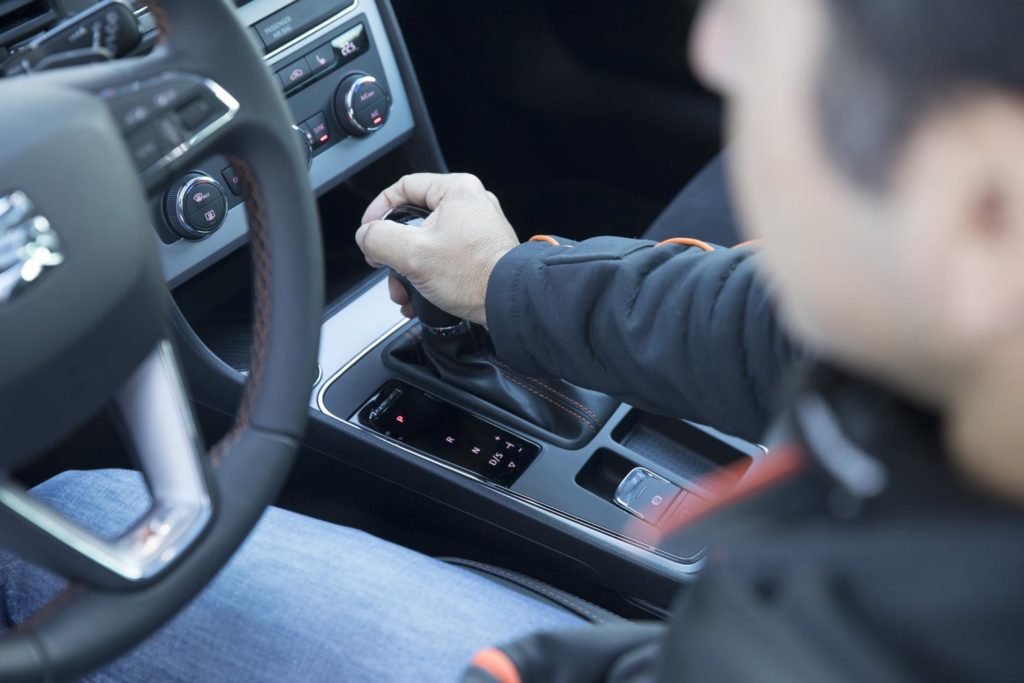
Cornering in snow
Brake before you get to a corner. Then turn very gently. Your car may not follow the front wheels. If that’s the case, don’t keep winding steering lock on, you want your steering wheels to be pointing where you’re going for maximum grip.
If the car starts to skid, steer gently into it. That means if the back of the car swings out to the left, turn the steering wheel to the left. This should mean that rather than spinning, the car will keep going roughly in a straight line.
Most importantly, if you feel the car starting to skid, don’t brake heavily. There’s every chance it’ll make things worse. Release the accelerator and let momentum slow you.
Do you know what to do if you lose control?
Imagine you’re approaching a corner, you turn the wheels and the car just ploughs straight on. This is called understeer and the only way to stop it happening is to approach the corner more slowly. That gives you more time to have gentler inputs on the steering wheel.
Equally, you might be cornering and experience the rear end coming round. This is called oversteer. The way to counteract this and prevent the car from spinning is to the turn the wheel in the direction that the car is skidding. Do this right and it will turn a potential spin into a drift.
Check your tyres before setting off
Summer tyres struggle to generate grip on snow. But there are some simple steps to take to ensure you have the best possible chance of driving safely.
First check your tread depth. The more tread your tyre has, the more chance it has of finding some kind of purchase. Also make sure your tyres have sufficient air in them. Check the user manual, door pillar or inside the fuel filler flap to see what pressures the manufacturer recommends.
Do you know which route you’re taking?
Think about your usual route. If it’s not on main roads, there’s every chance the roads will be snowier and more treacherous. Main roads are more likely to have been gritted and the volume of traffic will probably have helped to melt the snow which will make driving in snow easier.
Keep your distance
It can take you 10 times longer to stop in snowy conditions. Bearing that in mind you don’t want to run into other cars if you can help it – remember it’s your fault and you pay if you tail-end someone ‑ so keep your distance from them.
Think about chains or snow socks
Snow chains are metal chains that surround the wheel. You put them on the driving wheels. But be warned: they can be pretty tricky to fit so it’s best to practice before you need to fit them by the side of the road where it’s cold and wet. You can read more about snow chains here. And there’s a blog all about winter tyres here.

I’ve been writing about cars and motoring for more than 25 years. My career started on a long-departed classic car weekly magazine called AutoClassic. I’ve since pitched up at Autosport, Auto Express, the News of the World, Sunday Times and most recently the Daily Telegraph. When I’m not writing about cars and motoring, I’m probably doing some kind of sport or working in my garden.


